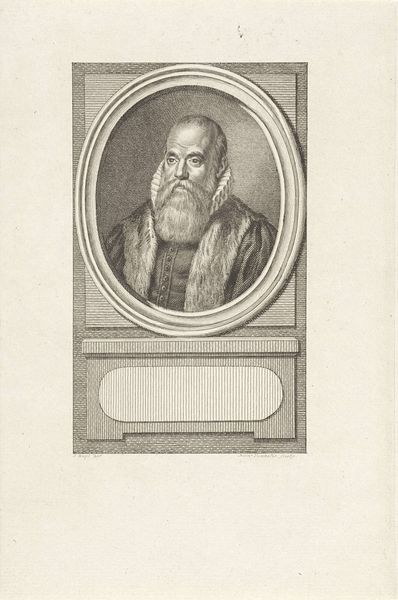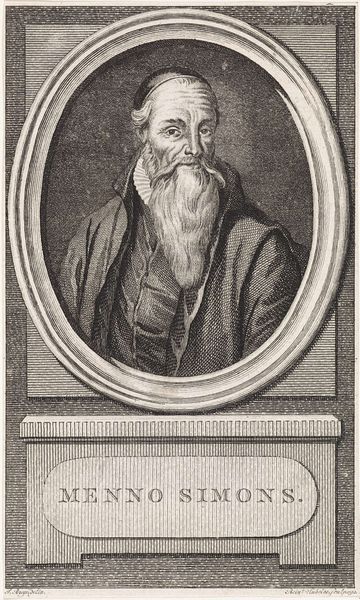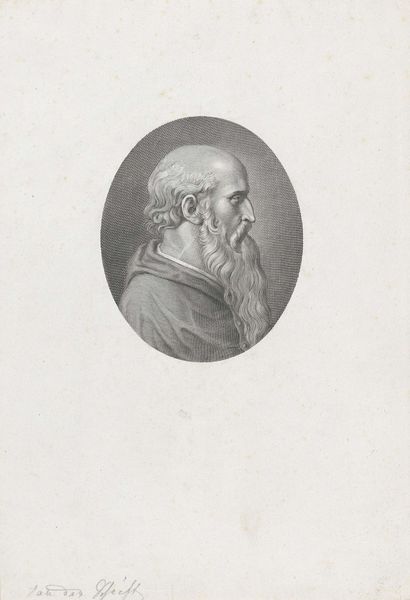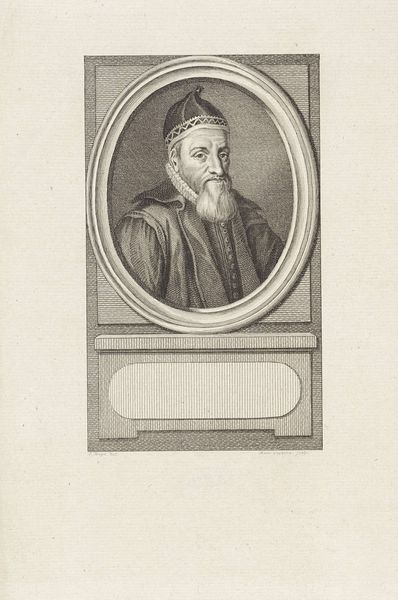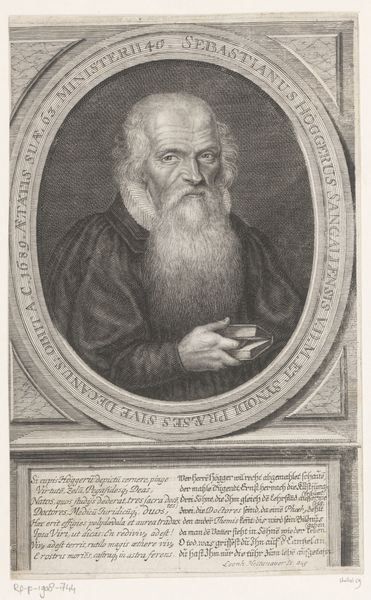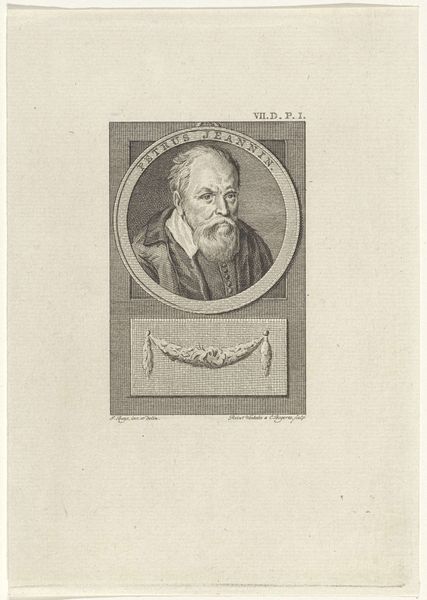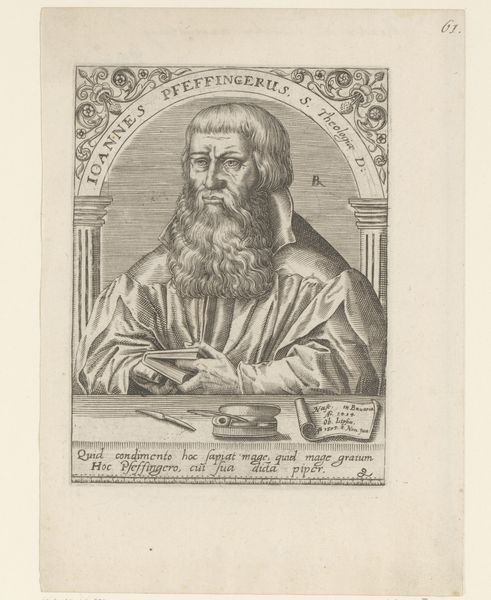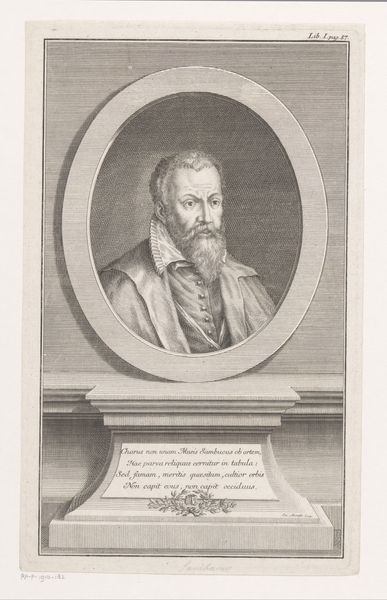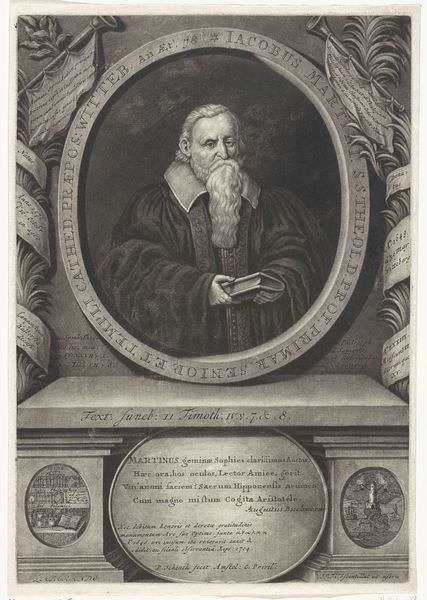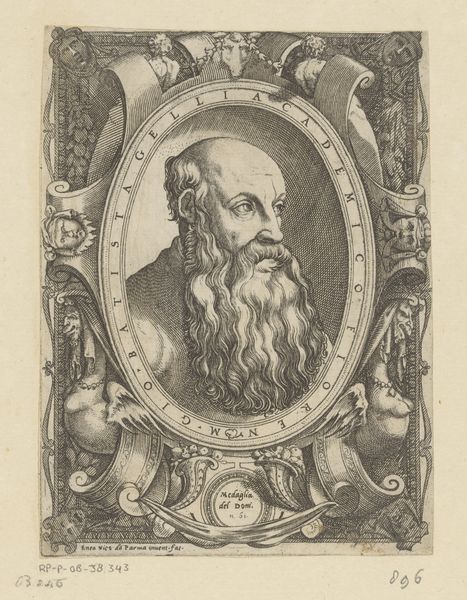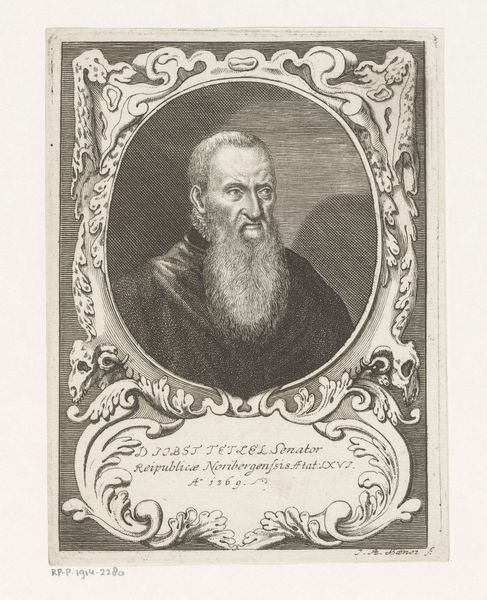
drawing, print, engraving
#
portrait
#
drawing
#
neoclacissism
#
aged paper
#
toned paper
#
photo restoration
# print
#
old engraving style
#
engraving
Dimensions: height 237 mm, width 155 mm
Copyright: Rijks Museum: Open Domain
Editor: This is a portrait of the physician Rembertus Dodonaeus, made in 1789 by Reinier Vinkeles. It's an engraving, a print, and it has a very formal, almost severe feel to it. What jumps out at you? Curator: It is fascinating how Vinkeles, working in the late 18th century, reaches back to capture Dodonaeus, a figure from the 16th century. The oval frame itself speaks volumes. Consider the symbolism—ovals often represent life, a sort of contained existence. Given that Dodonaeus was a physician, one can ponder whether Vinkeles consciously employed the shape to represent the fragile human form, a vessel of life Dodonaeus dedicated himself to understanding and preserving? Editor: That's interesting! I hadn’t thought about the frame itself having meaning. So, the very shape reinforces his profession? Curator: Precisely! And the stoic expression, almost iconic in its presentation, aligns with the broader Neoclassical desire to evoke earlier, grander eras. It suggests a timeless wisdom, doesn’t it? Vinkeles invites us not just to see a portrait but to connect with a legacy, a continuing thread of medical and scientific thought. Do you feel a connection to the subject when you look at it? Editor: I do, a little. It's more like respect than connection, though. It's like looking at a historical monument in human form. I'll definitely be thinking about frames differently now! Curator: Indeed. Visual culture builds upon itself; yesterday's symbols subtly shape today's perceptions. Reflecting on these continuities brings the past vividly into the present.
Comments
No comments
Be the first to comment and join the conversation on the ultimate creative platform.
